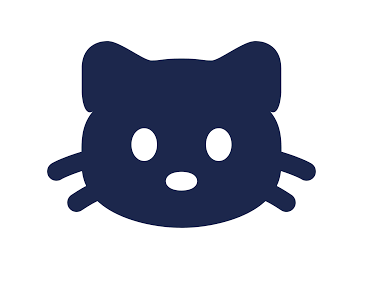How much wet food to feed a cat?
Feeding your cat the right amount of wet food depends on factors like their age, weight, activity level, and health condition. Here’s a general guideline to help you determine How much wet food to feed a cat:
General Guidelines for Wet Food Feeding
1. Check the Feeding Guidelines on the Packaging
Most wet cat food cans or pouches include feeding recommendations based on your cat’s weight. For example:
- For Adult Cats: Typically, 1 can (3 ounces/85 grams) per 3-4 pounds of body weight per day, divided into two or more meals.
- For Kittens: Kittens require more frequent feeding (3-4 times a day), with higher portions to support their rapid growth.
2. Adjust Based on Your Cat’s Weight
- Underweight Cats: Gradually increase the portion size to help them gain weight.
- Overweight Cats: Reduce portions slightly or consult a veterinarian for a tailored feeding plan.
3. Age and Life Stage Considerations
- Kittens: Need 2-3 times more calories than adult cats.
- Adults: Require balanced feeding to maintain weight.
- Seniors: May need less food due to reduced activity levels unless they have specific health conditions requiring more nutrients.
How much wet food to feed a cat?
- Determine Your Cat’s Daily Calorie Needs:
On average, an adult cat needs around 20 calories per pound of body weight per day.- Example: A 10-pound cat needs about 200 calories daily.
- Check the Calorie Content of the Wet Food:
Wet cat food labels usually state the calorie content per can or pouch.- If the food contains 90 calories per 3-ounce can, a 10-pound cat would need roughly 2.2 cans daily.
- Divide Into Multiple Meals:
Split the daily portion into 2-3 meals to avoid overfeeding and to keep your cat satisfied throughout the day.
Key Feeding Tips
- Supplement with Dry Food (Optional): If you’re mixing wet and dry food, adjust portions of both to avoid overfeeding.
- Hydration Needs: Wet food has high moisture content, which helps keep your cat hydrated, but always provide fresh water.
- Monitor Your Cat’s Weight and Health: Adjust portions based on their activity levels, weight changes, or health conditions.
Consult Your Veterinarian
If you’re unsure about how much to feed or if your cat has specific dietary needs (e.g., obesity, diabetes, kidney issues), consult your vet for personalized guidance.
Factors Influencing How Much Wet Food to Feed Your Cat
1. Activity Level
Active cats burn more calories and may require larger portions to maintain their weight.
- Highly Active Cats: Outdoor or playful cats may need up to 1.5 times the standard recommended amount.
- Less Active Cats: Indoor cats may require slightly less to avoid weight gain.
2. Cat’s Body Condition
To determine if you’re feeding the right amount, assess your cat’s body condition:
- Underweight Cats: You should feel ribs and spine prominently without much fat covering. Gradually increase their food intake.
- Healthy Weight Cats: Ribs are easily felt but not visible, and they have a slight waistline when viewed from above. Maintain their current feeding schedule.
- Overweight Cats: Ribs are hard to feel, and there is noticeable fat. Reduce portions and focus on weight management.
3. Special Diets
If your cat has medical conditions, their diet may require adjustments:
- Diabetic Cats: They often benefit from high-protein, low-carb wet food. Feed smaller, frequent meals to regulate blood sugar.
- Kidney Issues: Wet food is often preferred as it provides more hydration and is easier on the kidneys. Low-protein and low-phosphorus formulas are recommended.
- Weight Loss or Gain: Veterinarian-approved wet food formulas specifically cater to weight management.
Benefits of Wet Cat Food
- Hydration: Wet food contains about 70-80% moisture, helping cats stay hydrated, especially if they drink little water.
- Palatability: Cats love the taste and texture, making it great for picky eaters.
- Easier to Digest: Ideal for kittens, senior cats, or cats with dental issues who may struggle with dry kibble.
- Portion Control: Wet food is pre-portioned in cans or pouches, making it easier to serve precise amounts.
Transitioning Your Cat to Wet Food
If your cat is used to dry food and you’re switching to wet food:
- Start by mixing a small portion of wet food with their current food.
- Gradually increase the wet food over 7-10 days.
- Monitor your cat for any digestive upset, like diarrhea or vomiting, during the transition.
Signs You’re Feeding the Right Amount
- Weight Stability: Your cat maintains a healthy weight without gaining or losing excessively.
- Active and Energetic: They appear alert and playful.
- Shiny Coat and Bright Eyes: Proper nutrition reflects in your cat’s overall appearance.
Common Mistakes to Avoid
- Overfeeding: Wet food is calorie-dense, so avoid giving too much, as it can lead to obesity.
- Feeding from the Can: Always transfer the food to a clean dish to prevent contamination.
- Not Refrigerating Leftovers: Unused wet food should be refrigerated and consumed within 24-48 hours.
Example Feeding Schedule
For a healthy 10-pound adult cat needing 200 calories daily:
- Breakfast: Half a 3-ounce can (90 calories).
- Dinner: Half a 3-ounce can (90 calories).
- If feeding 2.5 cans daily, split the remaining amount between meals.
Conclusion
Feeding your cat the right amount of wet food is essential for maintaining their overall health and well-being. Consider factors like age, weight, activity level, and special dietary needs when planning meals. Always follow the feeding recommendations provided on the food packaging and consult your veterinarian for personalized advice.
Customers also view this
- What is cat food made of?
- How to Treat Lice in Cats Home Remedies
- What food does cat eat?
- Paw Paw cat food made in which country?
- Reflex cat food made in which country?
